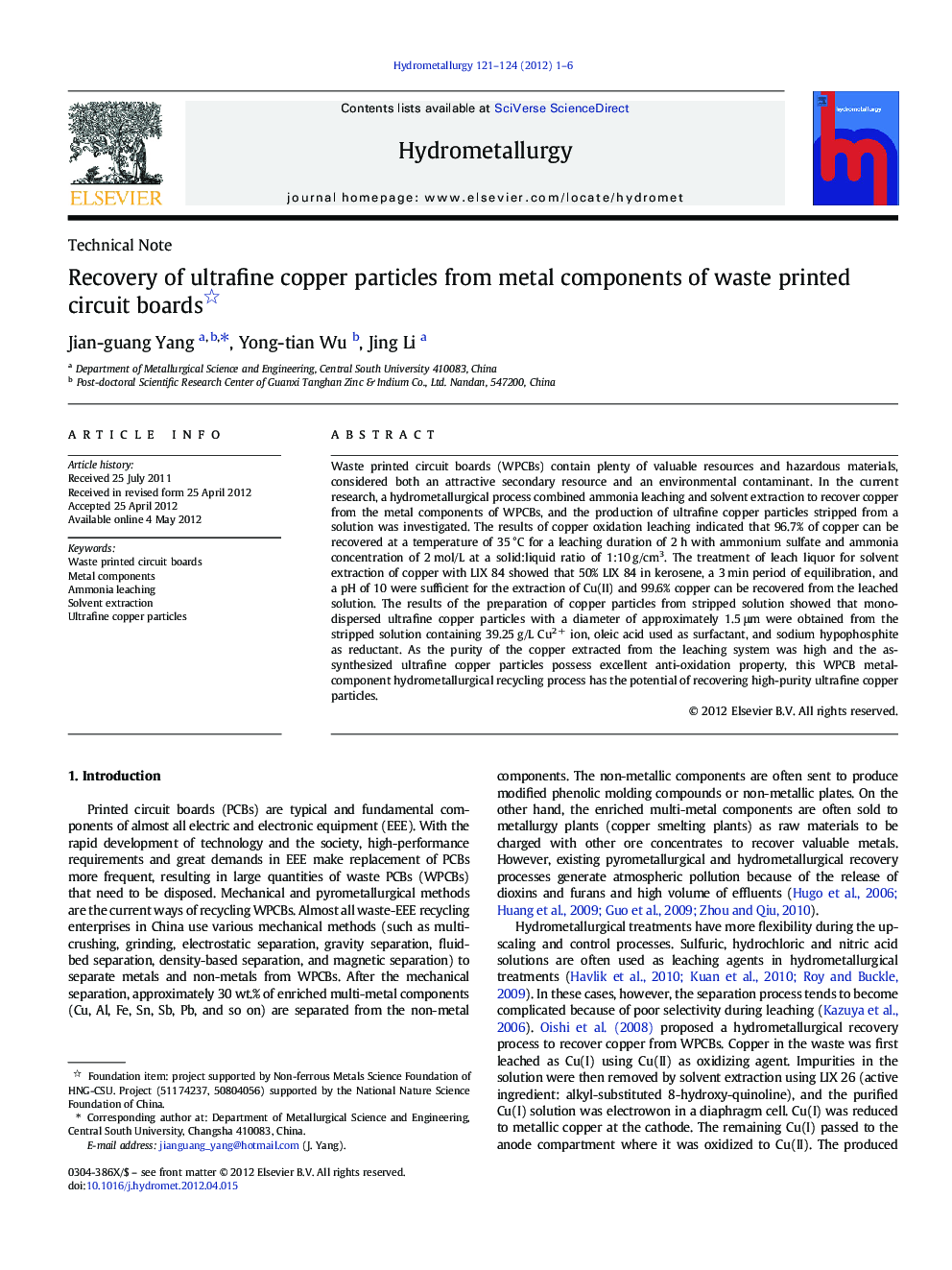| Article ID | Journal | Published Year | Pages | File Type |
|---|---|---|---|---|
| 212479 | Hydrometallurgy | 2012 | 6 Pages |
Waste printed circuit boards (WPCBs) contain plenty of valuable resources and hazardous materials, considered both an attractive secondary resource and an environmental contaminant. In the current research, a hydrometallurgical process combined ammonia leaching and solvent extraction to recover copper from the metal components of WPCBs, and the production of ultrafine copper particles stripped from a solution was investigated. The results of copper oxidation leaching indicated that 96.7% of copper can be recovered at a temperature of 35 °C for a leaching duration of 2 h with ammonium sulfate and ammonia concentration of 2 mol/L at a solid:liquid ratio of 1:10 g/cm3. The treatment of leach liquor for solvent extraction of copper with LIX 84 showed that 50% LIX 84 in kerosene, a 3 min period of equilibration, and a pH of 10 were sufficient for the extraction of Cu(II) and 99.6% copper can be recovered from the leached solution. The results of the preparation of copper particles from stripped solution showed that mono-dispersed ultrafine copper particles with a diameter of approximately 1.5 μm were obtained from the stripped solution containing 39.25 g/L Cu2 + ion, oleic acid used as surfactant, and sodium hypophosphite as reductant. As the purity of the copper extracted from the leaching system was high and the as-synthesized ultrafine copper particles possess excellent anti-oxidation property, this WPCB metal-component hydrometallurgical recycling process has the potential of recovering high-purity ultrafine copper particles.
► Copper was recovered from WPCBs with the form of ultrafine particles. ► The as-introduced hydrometallurgical recovery process parameters were optimized. ► The purity of the as-resultant Cu particles was 99.99%. ► The total recovery rate of Cu was more than 96%.
